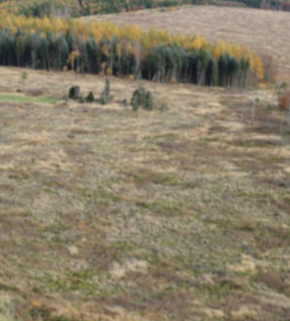
5. Upscaling Restoration

Europe has long pursued nature restoration, yet efforts remain far below what is needed to halt biodiversity loss and address climate change. Bridging the gap between ambitious policies and on-the-ground action requires adaptive frameworks, upscaling of local successes, and long-term strategies.
All European governments – whether in the EU or not – have recognised the nature crisis. They have high levels of ambition for nature restoration (eg. EU Biodiversity Strategy, Scottish Biodiversity Strategy [links to follow]), and been carrying out actions to restore nature for decades. However, the restoration carried out thus far is well below the level needed to halt biodiversity loss and build resilience in ecosystems under pressure from climate change and human activities. New action and innovation are clearly needed (eg. in finance) and will need to be implemented top-down. However, there are also many successful actions and projects already undertaken that now need to be upscaled - from the bottom-up.
As well as addressing much larger spatial scales, policies also have to reflect the very long time-scales involved in forest restoration. Many existing policies and laws have been written to reflect existing or historic conditions and priorities rather than to anticipate future conditions [insert ref]. One way to address this is to focus on providing an enabling framework to allow for adaptive approaches rather than rigid prescriptions that may quickly become irrelevant [see chapter 2 on the European Policy Landscape, add link]. This clearly presents challenges for regulators and others responsible for implementing policies, however without this type of policy adaptation, policies risk becoming rapidly out of date, irrelevant, or will require very frequent updating.
The distance between national (or international) policy and action at the forest site level is huge, and the time-scales involved are decades long. Policymakers need help to bridge this span if policies are to make a difference in the real world. We offer you advice from three angles: adapting policy to respond to environmental change; upscaling pilot projects to national implementation, and building on local practices and existing networks.
5.1 Adapting policy to respond to environmental and societal change
Forest degradation in Europe is increasingly driven by environmental change, with shifting climates, storms, fires, and pests reshaping forest ecosystems. As a result, today’s forest conditions differ greatly from those in which forests will mature. Policymaking must therefore adapt not only to environmental shifts but also to evolving societal needs for forest ecosystem services. This chapter highlights practical implication, introduces examples from demonstration sites as well as studies on societal perceptions. Policymakers must ensure flexibility through adaptive legislation, strong monitoring, and transparent modelling assumptions.
5.2 From pilots to large scale implementations
Policy actors often commission or support pilot projects, so it is important at the design stage to maximise the likelihood that the learning from the pilot is adopted. This will ensure that bottom-up good practice is used to deliver top-down policy aspirations, and that policies can be better grounded in real-life experience.
5.3 Local good practices & existing networks
Engaging stakeholders, especially local communities, is essential for successful and lasting forest restoration. Their involvement ensures that projects are context-appropriate, knowledge-informed, and broadly supported, strengthening both ecological outcomes and long-term stewardship.






